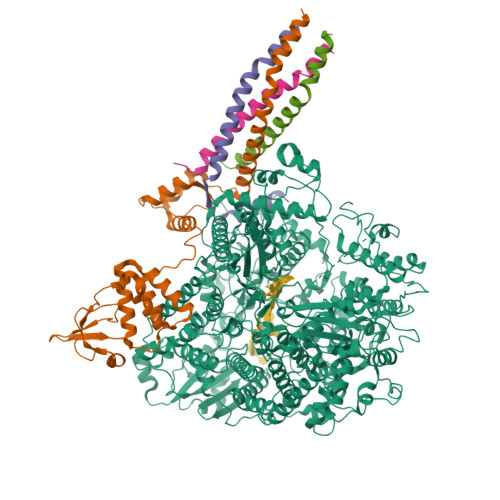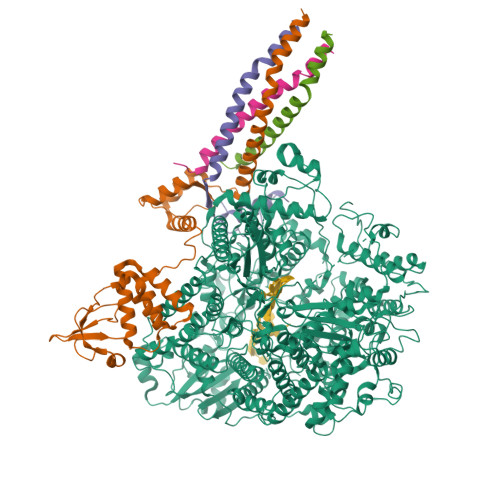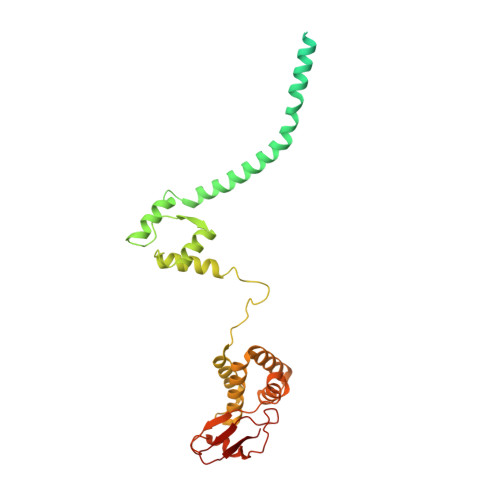Molecular mechanism of de novo replication by the Ebola virus polymerase.
Peng, Q., Yuan, B., Cheng, J., Wang, M., Gao, S., Bai, S., Zhao, X., Qi, J., Gao, G.F., Shi, Y.(2023) Nature 622: 603-610
- PubMed: 37699521
- DOI: https://doi.org/10.1038/s41586-023-06608-1
- Primary Citation of Related Structures:
8JSL, 8JSM, 8JSN - PubMed Abstract:
Non-segmented negative-strand RNA viruses, including Ebola virus (EBOV), rabies virus, human respiratory syncytial virus and pneumoviruses, can cause respiratory infections, haemorrhagic fever and encephalitis in humans and animals, and are considered a substantial health and economic burden worldwide 1 . Replication and transcription of the viral genome are executed by the large (L) polymerase, which is a promising target for the development of antiviral drugs. Here, using the L polymerase of EBOV as a representative, we show that de novo replication of L polymerase is controlled by the specific 3' leader sequence of the EBOV genome in an enzymatic assay, and that formation of at least three base pairs can effectively drive the elongation process of RNA synthesis independent of the specific RNA sequence. We present the high-resolution structures of the EBOV L-VP35-RNA complex and show that the 3' leader RNA binds in the template entry channel with a distinctive stable bend conformation. Using mutagenesis assays, we confirm that the bend conformation of the RNA is required for the de novo replication activity and reveal the key residues of the L protein that stabilize the RNA conformation. These findings provide a new mechanistic understanding of RNA synthesis for polymerases of non-segmented negative-strand RNA viruses, and reveal important targets for the development of antiviral drugs.
Organizational Affiliation:
International Institute of Vaccine Research and Innovation (iVac), Savaid Medical School, University of Chinese Academy of Sciences, Beijing, China.



















